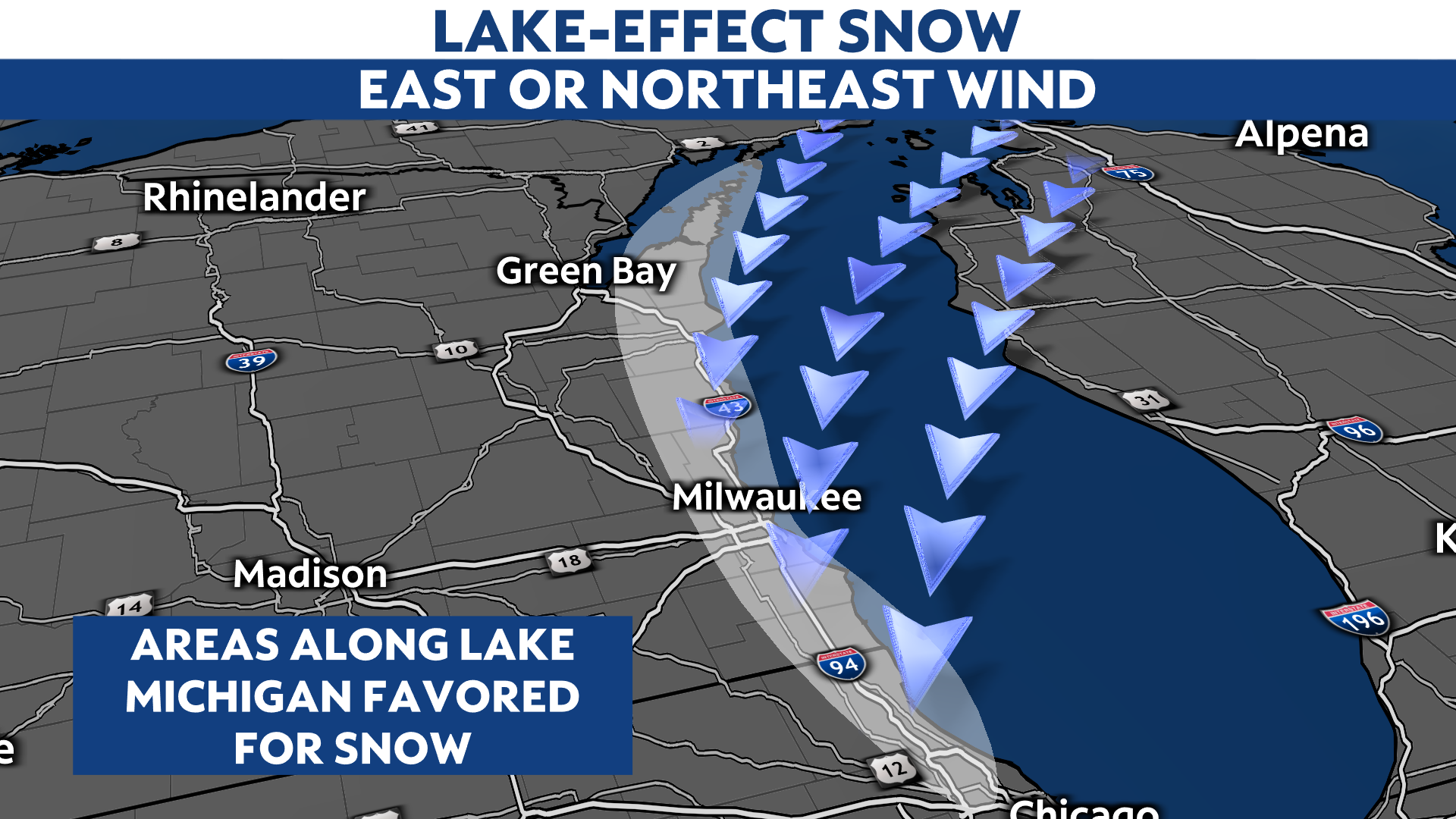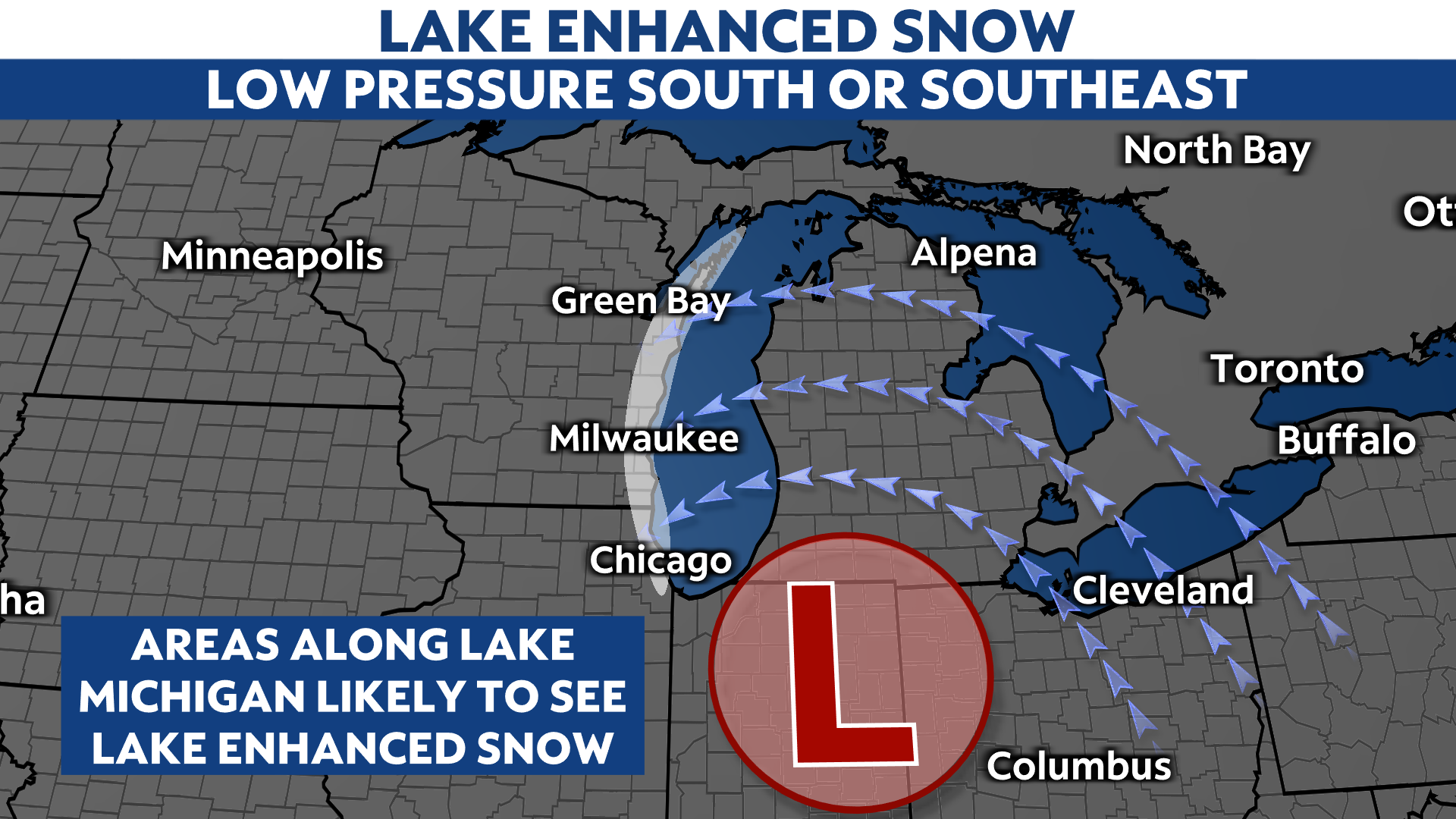Being in close proximity to the Great Lakes has its advantages, especially in the summertime. But in the winter, the lakes can have a huge impact on the amount of snowfall we see across Wisconsin.
Lake-effect and lake-enhanced snow are terms we hear very often during the winter months. While the two can both create heavy snowfall, how they form is very different.
Lake-effect snow is very common in the late fall and winter in the Great Lakes region. It forms when cold air blows across a relatively "warm" lake, transporting moisture from the unfrozen lake into the atmosphere.
That moisture eventually condenses and forms a narrow band of clouds that can produce heavy snow. In some instances, snowfall rates of 2 to 3 inches per hour are possible.
Wind direction plays a huge role in which areas see lake-effect snow. Days with a northerly wind can result in lake-effect snow downwind of Lake Superior in northern and northwest Wisconsin.

Days with an easterly or northeasterly wind can result in lake-effect snow along Lake Michigan in eastern Wisconsin.

Lake-effect snow events tend to become less common by February as the lakes start to freeze. Without any moisture available to be carried into the atmosphere, there's nothing to cause lake-effect snow to develop.

Lake-enhanced snow forms during an ongoing snow event. Like lake-effect snow, wind direction is a key component when it comes to lake-enhanced snow, too.
Lake-enhanced snow occurs when the wind is blowing off of one of the Great Lakes and adds moisture into a passing storm system.

Sunday's storm system was a perfect example of lake-enhanced snow. An area of low pressure passed by to the south of Wisconsin.
Low pressure systems rotate counterclockwise. This caused our wind to blow out of the northeast, off of Lake Michigan. Moisture was added into the storm system causing enhanced snowfall totals for areas along the lakeshore.

During both lake-effect and lake-enhanced snow events, visibility can be significantly reduced due to heavy snowfall. High snowfall rates can cause snow to quickly accumulate, creating slick roads.
Dangerous driving conditions are the most common hazards associated with these events. Whiteout or near whiteout conditions have been observed with both lake-effect and lake-enhanced snow.



